
-
Find the right food for your petTake this quiz to see which food may be the best for your furry friend.Find the right food for your petTake this quiz to see which food may be the best for your furry friend.Featured products
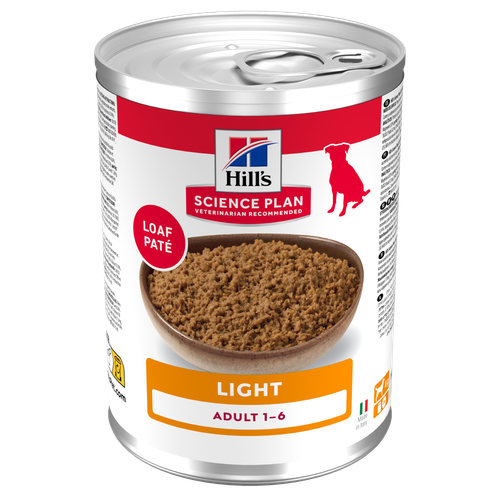 Adult Light Dog Food
Adult Light Dog FoodHill's Science Plan Light Adult Wet Dog Food is a complete premium pet food for adult dogs that tend to gain weight easily. This deliciously smooth loaf is formulated to deliver the appropriate amount of energy to support weight maintenance in adult dogs.
Shop Now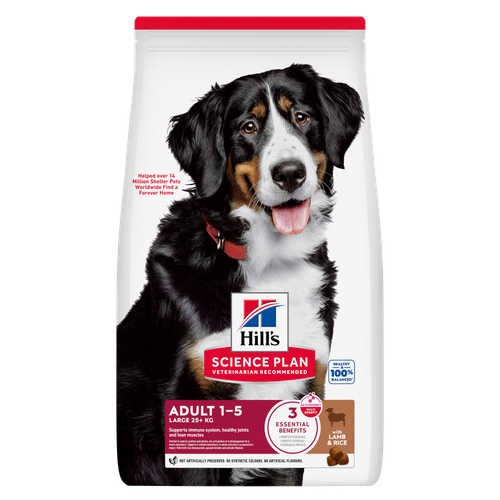 Large Breed Adult Dog Food
Large Breed Adult Dog FoodHill's Science Plan Large Breed Adult Dog Food with Lamb & Rice is a complete pet food, specially formulated with ActivBiome+ Multi-Benefit Technology.
This food is specifically designed to fuel the energy needs of large breed dogs during the prime of their life.Shop Now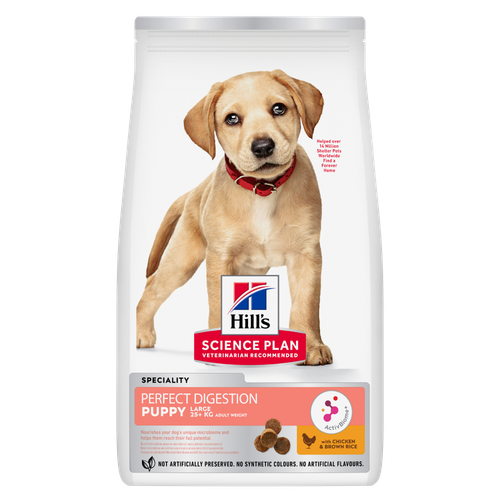 Perfect Digestion Large Breed Puppy Food
Perfect Digestion Large Breed Puppy FoodPrecisely balanced nutrition with Hill's ActivBiome+ prebiotic blend actively contributes to supporting digestive health and overall wellbeing to help your pet feel their best
Shop NowFeatured products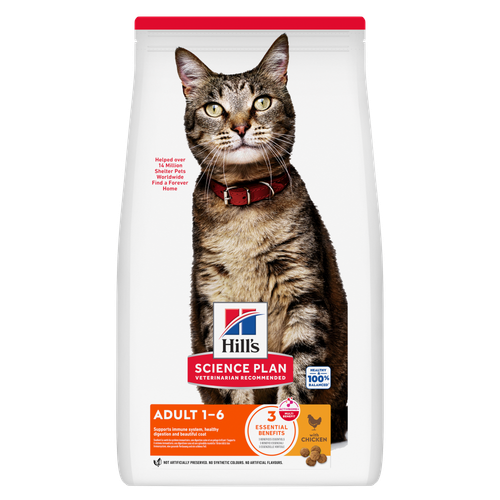 Adult Cat Food
Adult Cat FoodHill's Science Plan Adult Cat Food with Chicken is a complete pet food, specially formulated with ActivBiome+ Multi-Benefit Technology.
This food is specially formulated to fuel the energy needs of cats during the prime of their life.Shop Now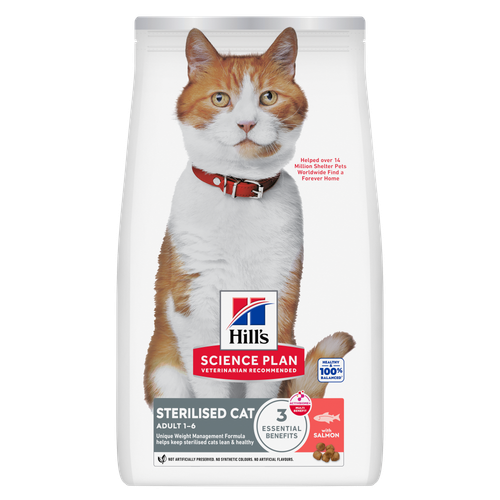 Sterilised Adult Cat Food
Sterilised Adult Cat FoodHill's Science Plan Adult Sterilised Cat Dry Food with Salmon is specially formulated with ActivBiome+ Multi-Benefit Technology. It is a precisely balanced nutrition, tailored to meet the needs of sterilised cats, to help keep sthem lean & healthy.
Shop Now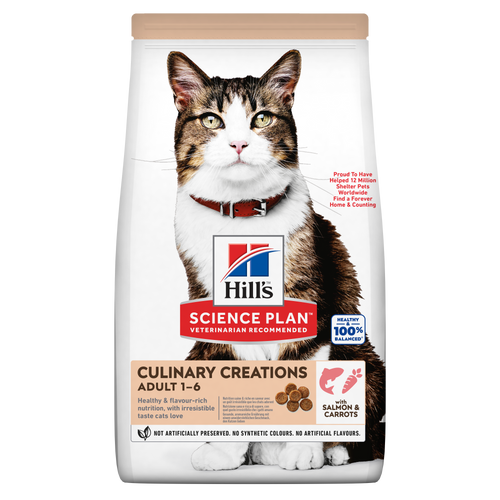 CULINARY CREATIONS ADULT CAT FOOD
CULINARY CREATIONS ADULT CAT FOODHill's Science Plan CULINARY CREATIONS Adult cat food with Salmon & Carrots was formulated to provide a great-tasting experience to cats. Its delicious flavour and texture are combine with essential nutrients to support cats' optimal health during the prime time of their life. Specially formulated with high-quality salmon protein, essential taurine for heart health & balanced minerals to support kidneys & bladder.
Shop Now -
Dog
- Dog Tips & Articles
-
Health Category
- Weight
- Food & Environmental Sensitivities
- Urinary
- Digestive
- Joint
- Kidney
-
Life Stage
- Puppy Nutrition
- Adult Nutrition
- Senior Nutrition
Cat- Cat Tips & Articles
-
Health Category
- Weight
- Skin & Food Sensitivities
- Urinary
- Digestive
- Kidney
-
Life Stage
- Kitten Nutrition
- Adult Nutrition
Featured articles Pet Nutrition: What Makes "Healthy" Pet Food Healthy? | Hill's Pet
Pet Nutrition: What Makes "Healthy" Pet Food Healthy? | Hill's PetIn people, the right diet is very important. If you are eating the wrong way for your metabolism, activity level, age and lifestyle you could end up with health issues.
Read More Microchipping: The Facts | Hill's Pet
Microchipping: The Facts | Hill's PetThe government has announced that as of April 2016, all dogs in the UK must be microchipped by law.
Read More The Incredible Science Behind Your Pet's Microbiome
The Incredible Science Behind Your Pet's MicrobiomeLearn what your pet's microbiome is, how it contributes to your pet's gut and overall health, and why nutrition is important in maintaining healthy microbiomes.
Read More -


Getting a new puppy is an exciting time for any family. You probably will have spent hours browsing the pet shops getting all the accessories ready. But one thing that might not cross your mind for a young puppy is dental care. We often think of tooth problems being an issue in older dogs, which is true, but caring about your dog’s teeth from puppyhood could prevent a lot of issues later in life. In this article we’ll look at how and when teeth come and go and how you can get into a good routine early on.
Tooth development stages in puppies
Puppies, like human babies, are born with no teeth. They are not necessary when suckling milk and could also make life a little uncomfortable for mum! By three to four weeks of age your puppy’s baby teeth, also called deciduous or milk teeth, will start to come through. They have 28 milk teeth in total. Teething can cause some discomfort because the teeth have to pierce through the gums. The main signs of teething you may notice are:
Drooling
Pawing at the mouth
Chewing toys or household items more than usual
Inflamed gums
Reduced food intake
These are all normal but if you ever feel that something is not right or excessive, get a check from your vet to be on the safe side. Rotating chew toys to keep them interesting will help reduce the furniture damage!
At around 3-4 months of age the milk teeth will start to get loose and fall out. They will then be replaced by their permanent adult teeth. You may see baby teeth on the floor but most are knocked out and swallowed while your puppy is eating.
Puppies should lose their milk teeth before their adult teeth emerge. Occasionally, some milk teeth do not fall out and are retained or persistent. These tend to be the canine teeth more than others and it’s much more common in breeds like toy breeds and flat-faced breeds where the teeth are often misaligned. If your puppy’s teeth are still in place when an adult tooth begins to show, you’ll need to get advice from your vet. Retained teeth can cause gum disease because they are more likely to allow food to get trapped between the adult and milk teeth. They may also cause discomfort. Your vet will probably advise removing them under a general anaesthetic.
The first permanent teeth to come through are usually the top incisors at the front of the mouth, and the last are the large molar teeth at the back of the mouth. Most puppies will feel very little discomfort during this time because the holes in the gums are already there from the milk teeth
Adult dogs have 42 teeth, 20 in the upper jaw and 22 in the lower jaw. The bottom jaw has two more molar teeth than the upper. These should all be erupted by the age of 6-7 months.


Tasty Tips
Prevention is better than cure
Dental disease is very common in dogs, especially in later life. It can cause pain and inflammation, tooth loss and also infections that can get into the bloodstream and damage other organs such as the heart and kidneys. Brushing is the most proven way to prevent dental and gum disease, just the same as in humans. Getting started when your dog is young means it will soon be a normal part of both your daily routines.
How to brush your puppy’s teeth
Position yourself and your puppy, so that you can have easy access to your puppy's mouth. You can do this by gently placing them between your knees or ask a friend or family member to gently restrain them for you. It’s very important to have both toothpaste and a toothbrush that are designed for pets, not humans. Human toothpaste is designed to foam up and be spat out. Animals could swallow too much and get excessive amounts of fluoride. A gentle pet toothbrush is ideal and when your puppy is small just a finger brush will be sufficient. Remember not to start brushing when your puppy is teething. If you start when they are uncomfortable, you may put them off for life. By the time you get your new puppy they may well already have all their milk teeth but if you are the breeder or are hand rearing a puppy, wait until all the milk teeth are there. It may also be a good idea to back off during the time the adult teeth are emerging. Here’s what to do:
It is important to keep your puppy calm and relaxed by praising throughout. You can pause to offer rewards if they seem like they need a break. Just go slow to start with. Don’t expect to do the whole mouth on day one. Do a minute or two and then stop. This way, the whole learning process should remain a positive experience.
Put some toothpaste on your finger and allow your puppy to lick it off and then start gently massaging it onto their teeth. Start at the back of the mouth because the front teeth tend to be more sensitive.
Once used to this you can start using the dog toothbrush.
Gently pull back lips and cheeks to gain access to the premolars and molars.
Brush in a circular motion, and be sure to brush where the tooth meets the gumline.
Try and get to the very back teeth, where teeth problems are most likely to develop.
Although this task may initially seem daunting, it becomes easier with practice and if your puppy gets used to it early in life it will become a stress-free task for you both. Daily brushing is ideal but if you don’t manage that, don’t beat yourself up, just do as often as you can because it’s certainly better than nothing.
As well as toothbrushing, there are special dry foods available that you can use to help keep your dog’s teeth and gums healthy when they become an adult. These foods are specially formulated with large kibbles so your dog has to chew them, rather than just swallow them. They also have specially aligned fibres designed to wipe the teeth clean, helping to keep your pet's teeth free from plaque and tartar build up. Ask your veterinarian for advice about these special foods which can be a welcome addition to daily brushing.
Your vet will do a full examination of your dog every year when they have their boosters but keeping an eye on their teeth and gums at home is a great idea. The earlier you spot things like chipped or broken teeth, tartar or inflammation of the gums, the sooner you can get professional help and hopefully the more quickly and effectively the problem can be resolved.
Reviewed by Dr Hein Meyer, DVM, PhD, Dipl-ECVIM-CA and Dr Emma Milne BVSc FRCVS.


One of our staff authors prepared this article for you
Related products

Hill's Science Plan Light Adult Wet Dog Food is a complete premium pet food for adult dogs that tend to gain weight easily. This deliciously smooth loaf is formulated to deliver the appropriate amount of energy to support weight maintenance in adult dogs.

Precisely balanced nutrition with Hill's ActivBiome+ prebiotic blend actively contributes to supporting digestive health and overall wellbeing to help your pet feel their best

Hill's Science Plan Large Breed Adult Dog Food with Lamb & Rice is a complete pet food, specially formulated with ActivBiome+ Multi-Benefit Technology.
This food is specifically designed to fuel the energy needs of large breed dogs during the prime of their life.
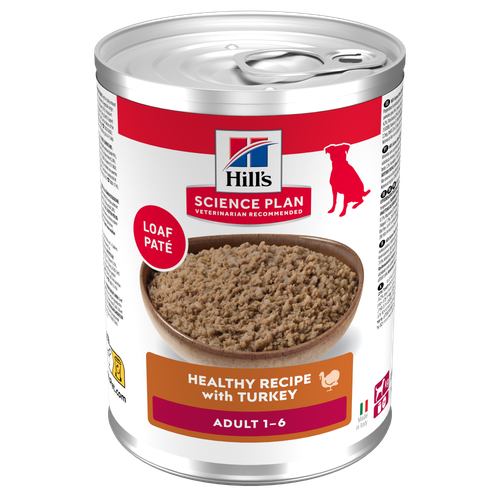
Hill's Science Plan Adult Wet Dog Food with Turkey is a complete premium pet food for adult dogs from 1 year. This deliciously smooth minced turkey loaf is formulated to deliver the appropriate amount of energy to support the needs of adult dogs.
Related articles

Learn to see the signs of an upset stomach in your dog, understand the triggers and explore some possible solutions.
Discover the causes, signs, and treatments of kidney disease in dogs and find methods of supporting your dog's kidney health. Learn more at Hill's Pet.

Dog obesity is a significant problem - learn more about helping your dog become trimmer and healthier through improved nutrition.

Gurgling tummies in turmoil are not good news for pets. Owners who have to clean up the unfortunate consequences, digestive problems are one of the rare downsides to owning a pet.

Put your dog on a diet without them knowing
Our low calorie formula helps you control your dog's weight. It's packed with high-quality protein for building lean muscles, and made with purposeful ingredients for a flavourful, nutritious meal. Clinically proven antioxidants, Vitamin C+E, help promote a healthy immune system.
Put your dog on a diet without them knowing
Our low calorie formula helps you control your dog's weight. It's packed with high-quality protein for building lean muscles, and made with purposeful ingredients for a flavourful, nutritious meal. Clinically proven antioxidants, Vitamin C+E, help promote a healthy immune system.

